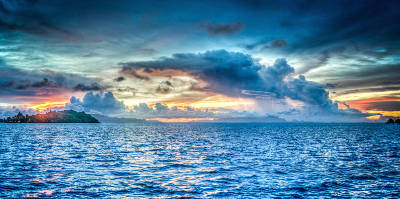← students

| First name: | Rosa |
| Last name: | García Novoa |
| Country: | Spain |

Thesis Subject:The organic matter diagenetic characteristics and benthic faunal assemblages along a depth gradient in submarine canyon systems
| Education: | |
| Dec 2003-Sept 2007
Ph.D., GeoOcean Dynamics, Jacobs University Bremen, Germany,Thesis advisor: Prof. Dr. Laurenz Thomsen |
|
| 2001-2003 M.Sc., Marine Science, The University of Queensland, Australia, Thesis advisor: Assoc. Prof. Dr. Ron W. Johnstone | |
| 2002
The Port of Brisbane Environmental Scholarship, Port of Brisbane Corporation, Australia (to run a consultancy project for the port) |
|
| 2001 Graduate School Research Travel Award, The University of Queensland, Australia (to go to Stockholm University) | |
| 1998-1999 Certificate of Pedagogical Aptitude, Natural Sciences, Polytechnic University of Catalunya, Spain | |
| 1993-1998
B.Sc., Biology, University of Barcelona, Spain. Fields of specialization: Ecology, Zoology and Botany Academic year (1997/98) abroad at the University of Lisbon, Portugal(EU program -Erasmus/Socrates-) |
Scientific Interests and Goals:I have developed my research in the fields of Marine Ecology and Biological Oceanography. My most recent work has focused on the sources, accumulation, transport and diagenetic characteristics of the organic matter and carbon in continental margins and submarine canyons. Using biogeochemical models I estimated the sedimentary biogeochemical fluxes of the organic matter and bioturbation in these environments. I also studied the relationship between biogeochemical parameters (Corg, Chl a, NO3, NH4, O2, etc.) and the distribution of deep sea meiofauna and nematodes. In the past, I studied the effects of toxic algae blooms on meiofauna communities in seagrass beds. Furthermore, I worked on the effects of sediment dredging on meiofauna and sediment biogeochemistry (NO3, NH4,PO4, Corg, TN, etc.), and the recovery of the altered environment. Now, I am interested in studying the interrelationship between the biogeochemical processes in the marine environment and the ecology/biology of the biota. At present my research will focus on the effects of global warming and non-indigenous species on sea grass beds biogeochemical processes in the Mediterranean, and how the altered sediment biogeochemistry can affect the sea grass communities.
Selected Publications:García, R., Johnstone, R.W. (2006) Effects of Lyngbya majuscula (Cyanophycea) blooms on sediment nutrients and meiofaunal assemblages in seagrass beds in Moreton Bay, Australia. Marine & Freshwater Research, 57:155-165
García, R., Koho, K.A, De Stigter, H.C., Epping, E., Koning, E., Thomsen, L. (2007) Distribution of meiobenthos in the Nazaré Canyon and adjacent slope (western Iberian Margin), in relation to sedimentary organic carbon. Marine Ecology Progress Series, 340:207-220
García, R., Thomsen, L. (2008) Bioavailable organic matter in surface sediments of the Nazare Canyon and adjacent slope (Western Iberian Margin). Journal of Marine Systems, 74:44-59
García, R., Van Oevelen, D., Soetaert, K., Thomsen, L., De Stigter, H.C., Epping, E. (2008) Deposition rates, mixing intensity and organic content in two contrasting submarine canyons. Progress in Oceanography, 76:192-215
Koho, K.A., García, R., de Stigter, H.C., Epping, E., Koning, E., Kouwenhoven, T.J, van der Zwaan, G.J. (2008) Sedimentary labile organic carbon and pore water redox control on species distribution of benthic foraminifera: A case study from Lisbon-Setúbal Canyon. Progress in Oceanography, 79:55-82
García, R., Johnstone, R.W., Rueda J.L. (submitted)The effects of dredging works to maintain port navigation channels in sediment geochemistry and associated meiofauna at the mouth of the Brisbane River, eastern Australia. Scientia Marina
García, R., Thomsen, L., De Stigter, H.C., Epping, E., Soetaert, K., Koning, E., De Jesus Mendes, P.A. (submitted) Sediment bioavailable organic matter, deposition rates and mixing intensity in the Setúbal-Lisbon canyon and adjacent slope (Western Iberian Margin). Deep Sea Research
García, R., Koho, K.A, De Stigter, H.C., Epping, E., Koning, E., Thomsen, L. (2007) Distribution of meiobenthos in the Nazaré Canyon and adjacent slope (western Iberian Margin), in relation to sedimentary organic carbon. Marine Ecology Progress Series, 340:207-220
García, R., Thomsen, L. (2008) Bioavailable organic matter in surface sediments of the Nazare Canyon and adjacent slope (Western Iberian Margin). Journal of Marine Systems, 74:44-59
García, R., Van Oevelen, D., Soetaert, K., Thomsen, L., De Stigter, H.C., Epping, E. (2008) Deposition rates, mixing intensity and organic content in two contrasting submarine canyons. Progress in Oceanography, 76:192-215
Koho, K.A., García, R., de Stigter, H.C., Epping, E., Koning, E., Kouwenhoven, T.J, van der Zwaan, G.J. (2008) Sedimentary labile organic carbon and pore water redox control on species distribution of benthic foraminifera: A case study from Lisbon-Setúbal Canyon. Progress in Oceanography, 79:55-82
García, R., Johnstone, R.W., Rueda J.L. (submitted)The effects of dredging works to maintain port navigation channels in sediment geochemistry and associated meiofauna at the mouth of the Brisbane River, eastern Australia. Scientia Marina
García, R., Thomsen, L., De Stigter, H.C., Epping, E., Soetaert, K., Koning, E., De Jesus Mendes, P.A. (submitted) Sediment bioavailable organic matter, deposition rates and mixing intensity in the Setúbal-Lisbon canyon and adjacent slope (Western Iberian Margin). Deep Sea Research


